A ball of mass collides horizontally with a stationary wedge on a rough horizontal surface, in the two orientations as shown. Neglect friction between ball and wedge. Two student comment on system of ball and wedge in these situation

Saurav: Momentum of system in x-direction will change by significant amount in both cases.
Rahul : There are no impulsive external forces in y-direction in both cases hence the total momentum of system in y-direction can be treated as conserved in both cases.
Saruav is wrong and Rahul is correct
Saurav is correct and Rahul is wrong
Both are correct
Both are wrong
The correct Answer is:D
In the second coase normal force by ground will be impulsive hence frictional force is also impulsive. So we can neglect it
Topper's Solved these Questions
- CENTRE OF MASS & MOMENTUM CONSERVATIONBook:BANSALChapter:CENTRE OF MASS & MOMENTUM CONSERVATIONExercise:EXERCISE-2 [PARAGRAPH TYPE]
Explore 10 Videos
- CENTRE OF MASS & MOMENTUM CONSERVATIONBook:BANSALChapter:CENTRE OF MASS & MOMENTUM CONSERVATIONExercise:EXERCISE-2 [REASONING TYPE]
Explore 10 Videos
- CENTRE OF MASS & MOMENTUM CONSERVATIONBook:BANSALChapter:CENTRE OF MASS & MOMENTUM CONSERVATIONExercise:Practice Exercise
Explore 20 Videos
- GRAVITATIONBook:BANSALChapter:GRAVITATIONExercise:EXERCISE -4 Section - B
Explore 6 Videos
Similar Questions
A particle of mass m strikes normally to a stationary wedge of mass 5m kept on the smooth horizontal surface as shown.If the particle sticks to the wedge then loss in kinetic energy of the system during collision is?
View SolutionA plank of mass m rests symmetrically on two wedges B and C of mass M. What is the acceleration of the plank? Neglect friction between all the contact surfaces.
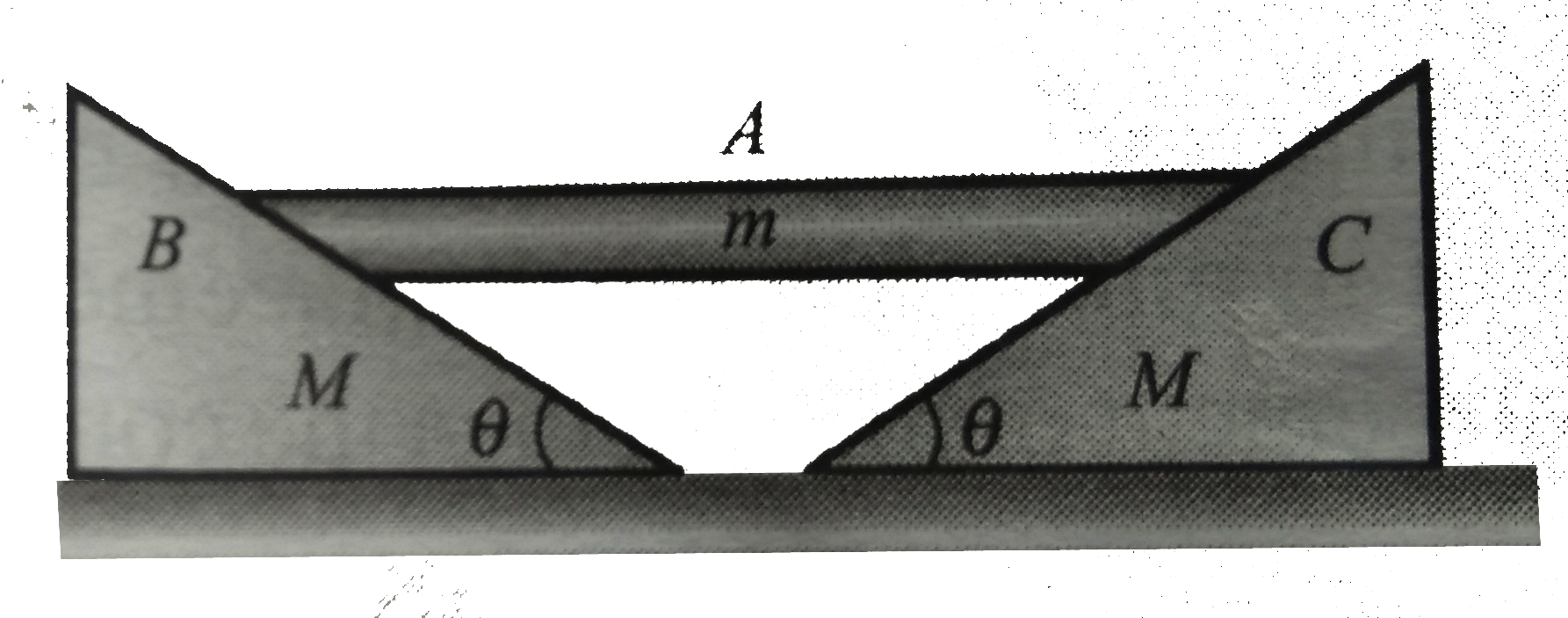
View Solution
Knowledge Check
A ball of mass m collides horizontally with a stationary wedge on a rough horizontal surface, in the two orientations as shown. Neglect friction between ball and wedge. Two student comment on system of ball and wedge in thses situations
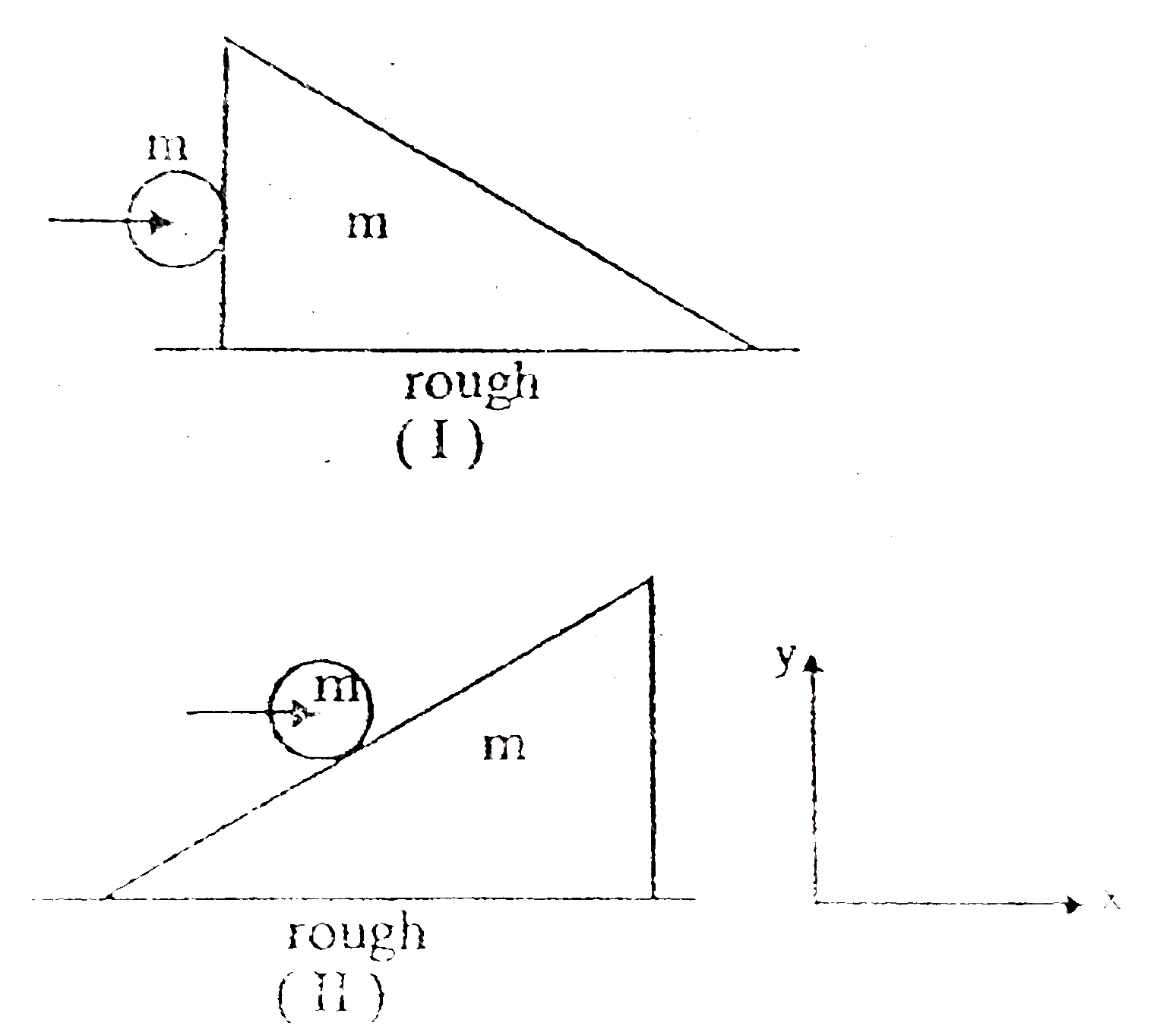
Saurav : Momentum of system in x−direction will change by significant amout in both cases. Rahul : There are no impulsive external forces ijn y−directions in both cases hence the total momentum of system in y-directions can be treated as conserved in both cases .ASaurav is wrong and Rahul is correctBSaurav is correct and Rahul is wrongCBoth are correctDBoth are wrongA ball of mass in collides horizontally with a stationary wedge on a rough horizontal surface, in the two orientations as shown. Neglect friction between the ball and the wedge. The students comment on the system of ball and wedge in these situations
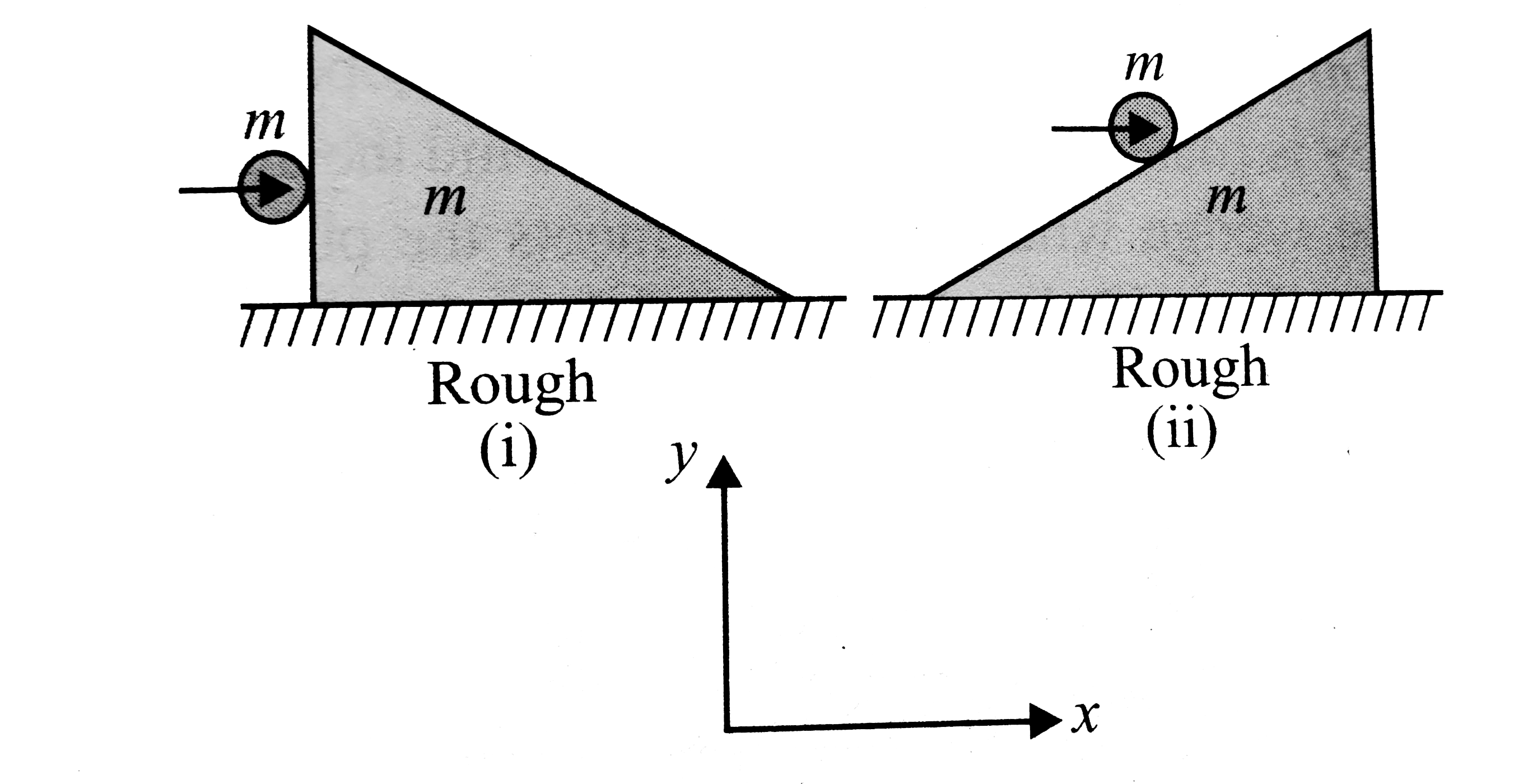 Saurav: Momentum of the system in x-direction will change by significant amount in both the cases. Rahul: There are no impulsive external forces in x-direction in both cases, hence the total momentum of the system in x-direction can be treated as conserved in both cases. ASaurav is incorrect and Rahul is correctBSaurav is correct and Rahul is incorrectCBoth are correctDBoth are incorrect
Saurav: Momentum of the system in x-direction will change by significant amount in both the cases. Rahul: There are no impulsive external forces in x-direction in both cases, hence the total momentum of the system in x-direction can be treated as conserved in both cases. ASaurav is incorrect and Rahul is correctBSaurav is correct and Rahul is incorrectCBoth are correctDBoth are incorrectA triangular wedge is placed on smooth horizontal surface. A block is placed on wedge as shown in the figure. Coefficient of friction between block and wedge is μ. Initially system reamins at rest.
 Aμ=tanθBμ=cosθCμ=1tanθDμ=sinθ
Aμ=tanθBμ=cosθCμ=1tanθDμ=sinθ
A block of mass m is placed at rest on a smooth wedge of mass M placed at rest on a smooth horizontal surface. As the system is released
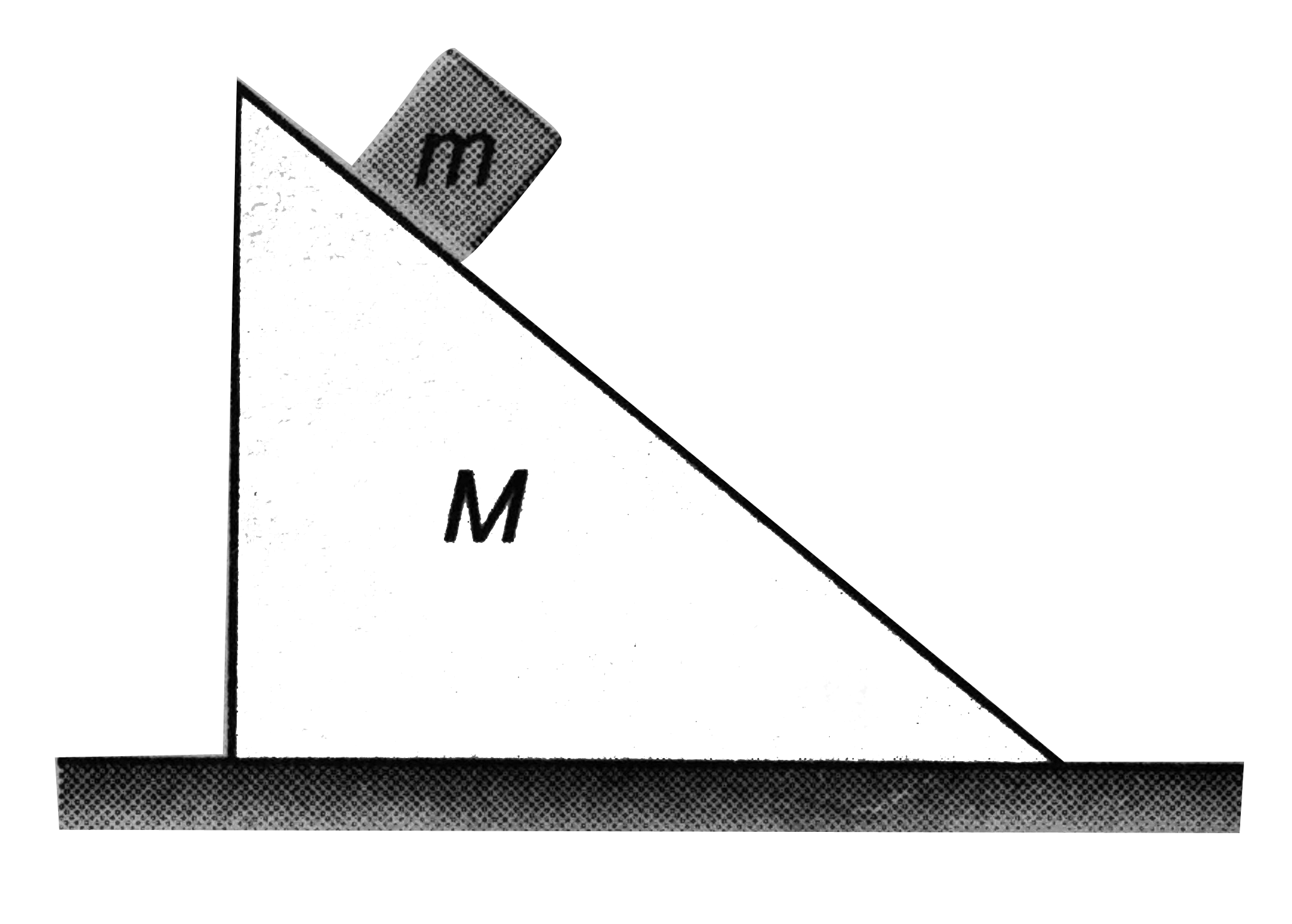
View SolutionA block of mass m slides over a smooth wedge of mass M which is placed over a rough horizontal surface . The centre of mass of the system will move towards left
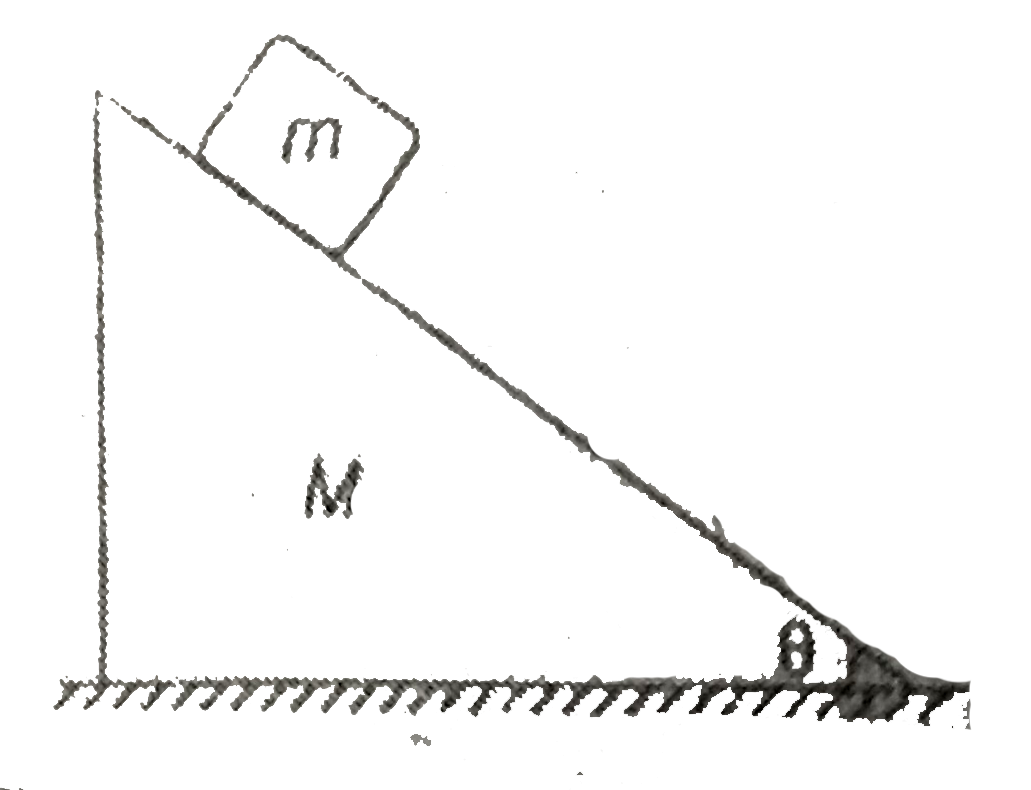
Here μ = coefficient of friction between the wedge and the ground .
View SolutionTwo blocks of mass m and 2m are arranged on a wedge that is fixedd on a horizontal surface. Friction coefficient between the block and wedge are shown . Find the magnitude of acceleration of two blocks.

View SolutionA block of mass m rests on a stationary wedge of mass M. The wedge can slide freely on a smooth horizontal surface as shown in figure. If the block starts from rest

View SolutionA wedge of mass M resting on a horizontal frictionless surface is acted upon by a force F in the horizontal direction as shown in figure. Find the net horizontal force acting on the shaded portion of the wedge.
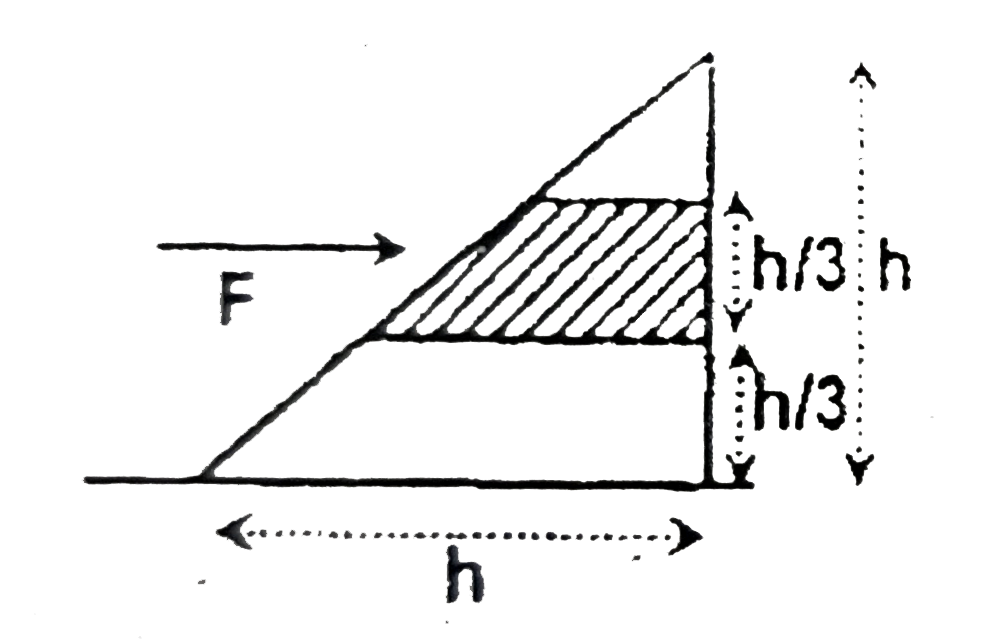
View Solution